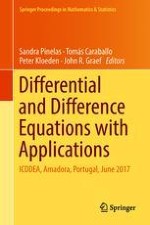This book gathers papers from the International Conference on Differential & Difference Equations and Applications 2017 (ICDDEA 2017), held in Lisbon, Portugal on June 5-9, 2017. The editors have compiled the strongest research presented at the conference, providing readers with valuable insights into new trends in the field, as well as applications and high-level survey results.
The goal of the ICDDEA was to promote fruitful collaborations between researchers in the fields of differential and difference equations. All areas of differential and difference equations are represented, with a special emphasis on applications.
